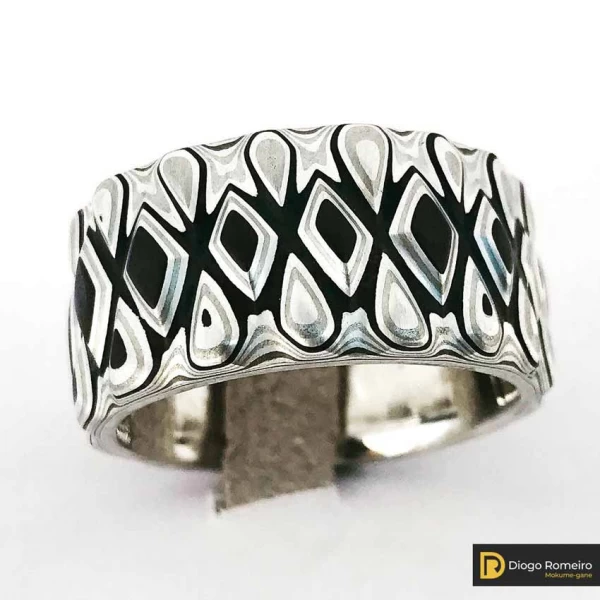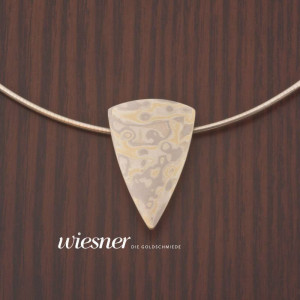What actually is Shibuichi

An artfully crafted mokume gane ring with shibuichi and copper.
Shibuichi is a traditional Japanese alloy that is mainly used in the manufacture of art and jewelry. It consists of a mixture of silver and copper and can be further refined by gold plating or patination. The origins of this technique date back to the Nara period in the 7th century. Although Shibuichi was used in the manufacture of Mokume gane rings , it is worth taking a look at this fascinating material.
Who invented shibuichi and when?
"Shibuichi is not the work of one person, but the result of centuries of experience and dedication."
The origins of Shibuichi cannot be attributed to a specific person or a specific point in time. Rather, the alloy was created over the course of centuries through the continuous development of Japanese craftsmanship. Shibuichi was first used as early as the Nara period - since then it has been part of the permanent repertoire of traditional Japanese craftsmen.
What role does shibuichi play in handicrafts
 An elegant choker made from mokume gane with shakudo, silver and copper.
An elegant choker made from mokume gane with shakudo, silver and copper.
Shibuichi has been used in Japanese art for centuries to make precious objects such as sword fittings, caskets and tea vessels. It is particularly valued for its ability to produce subtle color nuances, which are created through targeted patination. Over time, a natural, darker patina develops, giving the material a special depth and character.
The name "Shibuichi" translates as "a quarter" - originally this referred to the ratio of silver to copper (25% silver, 75% copper).
Today's artisans also like to use shibuichi. It is easy to work with and allows a wide range of color and texture effects thanks to different patination techniques.
What substances can it be stained with and what colors does this produce?
Shibuichi can be stained with various substances to achieve a wide range of color variations and patina effects. Here is an overview of common staining agents and the possible color results:
- Hydrogen peroxide: produces a greenish patina.
- Salt: produces blue to greenish tones.
- Ammonia: produces a reddish to brown patina.
- Acetic acid: produces brown discoloration.
- Wine: can produce reddish color nuances.
What was Shibuichi used for in the past and today?
Historically, shibuichi was mainly used in Japanese art and in the forging of luxury items. The alloy's diverse color properties were particularly appreciated in sword handles, fine vessels and small art objects.
 Diogo Romeiro, a contemporary jewelry designer who uses Shibuichi in his creations.
Diogo Romeiro, a contemporary jewelry designer who uses Shibuichi in his creations.
Today, Shibuichi is experiencing a new heyday: in modern jewelry design, it is often used to create extraordinary pieces with surfaces full of character. The combination of old technology with contemporary design language makes the material particularly exciting for designers.
Does shibuichi also play a role in mokume gane?
Yes, Shibuichi is an important material in the Mokume Gane technique. This artistic Japanese method combines different metals in layers that are bonded together under pressure and then worked to create a marble-like structure.
In the Mokume Gane process, the interplay of metals and subsequent patination creates complex, lively textures. Shibuichi contributes to the depth and variety of colors here, especially through its ability to create a variety of patina effects during the staining process.






